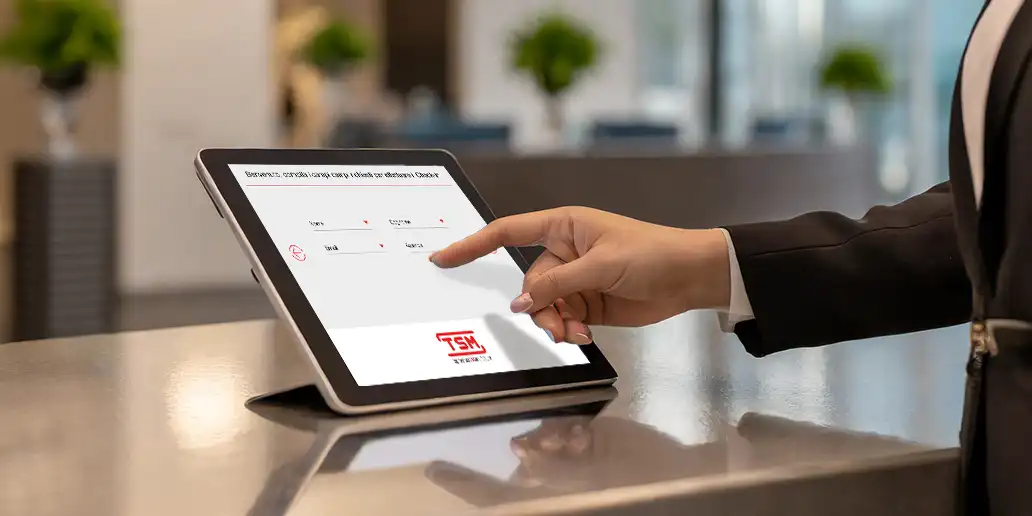In today’s competitive world, raising the bar is critical to staying ahead of competitors and exceeding customer expectations. Competition is no longer based only on price or product, but on the ability to consistently exceed customer expectations.
The unwritten rule of the current market states that the most satisfying experience experienced by a customer in any context becomes the point of reference for all his future expectations. Every customer experiences a wide range of experiences across different touchpoints and industries. The highest quality of these experiences becomes the customer’s personal benchmark, raising their expectations not only of the specific provider but also of everyone else they interact with.
This means that companies must constantly exceed the standards set by their rivals in every single interaction with customers. If they don’t do so, they risk not satisfying their customers’ requests and being inadequate compared to their competitors.
In this article, we’ll look at eight strategies to help you navigate this competitive landscape and elevate your company above the competition.
Eight strategies to exceed your customers’ expectations
1. Listen to your customers
The first and most fundamental strategy is to actively listen to your customers. Through instant surveys, social media feedback, and direct interactions, you can gain valuable insights into what customers value and want to improve. This direct framework from the voice of the customer can guide your business decisions and help you personalize the customer experience.
It certainly seems obvious, banal. However, not many companies actually do this; not many consultants really know how to listen to the client. They certainly know how to argue, justify, negotiate… but listening is something else entirely.
Those who really do it know how to grasp valuable signals even before a customer makes alternative decisions and know how to seize interesting and mutual opportunities.
2. Continuous innovation
Innovation should never stop. Your company must anticipate customer needs before they become apparent. By investing in research and development, you can offer products, services and experiences that not only meet current expectations but exceed them, keeping your company ahead of the curve.
In a world crowded with ideas, products and services, innovation is the beacon that guides businesses towards sustainable success. However, innovation is not simply about following in the footsteps of others or copying what seems to work for competitors. On the contrary, innovation requires a leap into the void of originality, a journey into the unexplored with the aim of thinking and acting in a new way.
For companies, innovation means peering beyond the conventional horizon, exploring better, more efficient and more effective ways to meet customer needs, optimize operations and differentiate themselves in the market. It means asking bold questions and seeking answers that haven’t yet been written.
We could summarize by saying that innovation begins with thinking in a new way, with an open and curious mindset. But also studying better ways: innovation is not just a question of product; it is also improving processes, customer service, internal management and marketing strategy.
Making the unboxing of your product unforgettable is one example. Unboxing turns the personal experience of opening a new product into a shared event that can engage and excite potential customers. Viewers indirectly experience the emotion of opening and can be positively influenced towards the purchase.
Unboxing connects the online and offline experience, creating a continuum in the customer journey. Even if the product is purchased online, the physical opening experience becomes a crucial moment in the interaction with the brand.
Another example are apps dedicated to customer loyalty, which offer discounts, collection of points and personalized promotions directly on the customer’s smartphone, encouraging brand loyalty and improving direct communication with the customer.
3. Personalize the experience
Personalization is the key to creating meaningful connections with your customers. Using the data at your disposal, you can offer tailored experiences that respond to your customers’ specific needs and preferences, making each interaction unique and memorable. Ahead, we’ll look at a handy tool that can really raise the bar.
At the moment, with the term customization in the context of marketing and customer service, we mean tailoring communications, products, services and experiences based on customers’ individual characteristics, such as their purchasing behaviors, preferences, demographics and interaction history with the brand.
This approach is based on the idea that customers feel more valued and understood when the offers they receive are relevant to their specific interests, rather than being generic or irrelevant. Here are some ways personalization can be implemented to create more meaningful connections:
- Personalized communication: Instead of sending the same marketing message to all customers, companies can use the data collected to segment their audiences and send personalized messages that resonate with each segment’s specific needs and interests. This may include personalized emails, product recommendations on websites, and targeted advertisements.
- Product Recommendations: Using machine learning algorithms and the analysis of customer browsing and purchasing data, companies can offer highly personalized product recommendations. This not only increases the chances of sales, but also improves the customer experience by making it smoother and more personalized.
- Personalized browsing experiences: Adapt the content and appearance of a website or app based on the user’s preferences and past behavior. This may include modifying the homepage to show relevant products or services, or suggesting content that may be of interest to the customer.
- Tailored offers and promotions: Create specific offers or promotions based on customers’ shopping habits or special occasions, such as birthdays or membership anniversaries. This demonstrates attention to detail and appreciation for the customer, enhancing loyalty.
- Personalized Customer Support: Provide a tailored support experience by remembering past interactions and using this information to resolve issues more efficiently. This can include tailoring responses based on the customer’s preferred tone and communication style.
Implementing personalization requires a significant investment in technology and data analytics, but the benefits in terms of customer satisfaction, loyalty and increased sales can be substantial.
Creating meaningful connections through personalized experiences helps build trust and loyalty with customers, which is critical to a company’s long-term success.
4. Team training
A well-trained team is essential to delivering an exceptional customer experience. Investing in training your employees, not only on product specifics but also on interpersonal skills, can make a big difference in how customers perceive your company.
Team building is not simply an investment in the individual; it is the investment in the future of the company. Raising the skills of your team means equipping your collaborators with the tools, knowledge and skills necessary to innovate, improve processes and offer exceptional service to customers. When team members grow professionally, the entire organization benefits, becoming more agile, more innovative and more resilient in the face of market changes.
Modern collaboration systems play a key role in this process. Platforms like Slack, Microsoft Teams, or Asana, allow team members to communicate and collaborate in real time, regardless of their geographic location. These tools offer a variety of features, such as group chats, video conferencing, file sharing on wall-mounted screens that can significantly improve communication efficiency and speed up training.
Raising the bar also means recognizing when it’s time to seek external expertise to complement and enhance your capabilities. Relying on a strategic partner, especially in the critical domain of marketing, can offer a fresh perspective and access to cutting-edge expertise and technology. This partner can work closely with your company, acting almost as an extension of your team, to identify and exploit new market opportunities, optimize communication strategies and maximize the ROI of marketing campaigns.
It can actually be said that unity is strength. Collaborating with an external marketing partner not only enriches your overall strategy but also offers the opportunity to learn from experts in the field, transferring additional skills to your internal team.
This synergy between internal training and external partnership creates a virtuous circle of learning, innovation and growth, allowing your company to exceed market and customer expectations.
5. Benchmarking and competitor monitoring
Staying informed about best practices in your industry and analyzing what your competitors are doing will allow you to adapt or improve these strategies for your business. Benchmarking is essential to keeping your offering competitive and innovative.
Here are some practical tools and ways to benchmark:
- Competitor Analysis: Use tools like SEMrush, Ahrefs or SimilarWeb to analyze your competitors’ SEO strategies, web traffic, traffic sources and the keywords they rank best for. These tools can also help you identify effective backlinks and content strategies.
- Customer Surveys and Feedback: Create surveys to collect direct feedback from customers on how they perceive your brand compared to competitors. Tools like SurveyMonkey or Google Forms can make this process easier.
- SWOT Analysis (Strengths, Weaknesses, Opportunities, Threats): This method allows you to compare internal strengths and weaknesses with the opportunities and threats of the external market. It can be useful for evaluating where your company stands compared to the competition.
- Financial Performance Metrics: Use financial reporting tools and databases such as Bloomberg, S&P Capital IQ, or even public annual reports to compare key financial metrics (such as profit margin, ROI, etc.) with those of your competitors.
- Online Review Analysis: Platforms like Trustpilot, Yelp, or Google My Business can provide valuable insights into customer perceptions of your company and your competitors, highlighting areas of strength and improvement.
- Mystery Shopping: Employing people to experience both yours and your competitors’ services and reporting the experience in detail can offer a unique perspective on how to improve.
- SEO: SEO is a critical component of digital benchmarking. Search engine optimization not only improves your online visibility but also provides valuable data on your competitors. By analyzing the keywords your competitors rank well for, their content strategies, and their website structure, you can identify areas where your SEO strategy could be improved to compete more effectively.
6. Agile response to feedback
The ability to respond quickly and effectively to customer feedback is crucial. Customers appreciate when their concerns are listened to and addressed in real time, and an agile response can turn a negative experience into a positive one, thus strengthening customer loyalty.
Tools such as Kiosk Emoticon are exemplary for their ability to detect the degree of satisfaction with an online or offline experience, instantly, thus ensuring timely intervention.
7. Technology and digitalisation
Digitalization can significantly improve the customer experience by simplifying processes that would otherwise have been complex or tedious. Whether it’s optimizing your website, streamlining the checkout process, or implementing chatbots for immediate support, technology can offer solutions that elevate the overall customer experience.
We cannot fail to consider the incoming revolution linked to the introduction of artificial intelligence (AI). Artificial intelligence (AI) represents one of the fundamental pillars of contemporary technological innovation, radically transforming the way we live, work and interact.
Businesses, both in the product and service industries, can leverage artificial intelligence (AI) in numerous ways to innovate, improve operational efficiency, personalize the customer experience and create new offerings.
Later in this article we will see an example of digital transformation.
8. Customer-centric corporate culture
Last but not least, creating a company culture that puts the customer at the center of every decision is essential. Every team member, regardless of role, should understand how their work impacts customer satisfaction and actively contribute to improving the overall experience.
You need to make sure that each department’s goals are aligned with the overall goal of improving the customer experience. This requires strategic planning and coordination across teams to ensure everyone is working towards the same goal.
Internal communication is important. Effective communication also helps create an environment where employees feel valued and listened to, increasing their commitment to common goals.
Creating a customer-centric company culture means prioritizing customer needs and experiences in every aspect of your business. This approach requires a change in mindset, strategies and operations.
Here are 10 practical ways to do this:
- Clearly define the customer-centric vision: Start with a vision statement that places the customer at the center of all business decisions. This vision must be clearly communicated at all levels of the organization.
- Staff training and development: Invest in the training of your employees, focusing not only on technical skills but also on interpersonal skills such as active listening, empathy and effective communication. Make sure all team members understand the importance of providing an exceptional customer experience.
- Collect and act on customer feedback: Use surveys, online reviews, focus groups and other forms of feedback to hear what your customers are saying. It is important not only to collect this data but also to act concretely on the basis of it to improve products, services and processes.
- Reward customer-focused behaviors: Recognize and reward employees who go above and beyond to meet or exceed customer expectations. This may include incentives, recognition and promotions that highlight the importance of these actions.
- Bottom-up Leadership: Senior leaders and managers must lead by example by living and breathing the customer-centric culture. Their ability to demonstrate commitment to best serving customers will inspire all staff.
- Incorporate the customer into business decisions: Ensure that customer voices are an integral part of business decision-making, from product innovation to customer service to marketing and beyond. This principle is also the cornerstone of User-Centered Design (UCD), an approach to design and development that places end users at the center of the design process. User-Centered Design focuses on how products and services meet user needs and expectations, aiming to significantly improve usability and the overall user experience. A project approached in this way places a website, an app or an interactive experience on a clearly different level from a simple realization of a functional request.
- Continuously improve the customer experience: Use data and analytics to understand customer journeys and identify friction points. Be proactive in looking for ways to simplify, improve and personalize the customer experience.
- Build transparent communication: Communicate openly with customers about changes, improvements and issues. Transparency builds trust and shows that your company puts customers first. Digital channels, web and digital signage, are ideal means to reach the right customer at the right time.
- Adopt customer-focused technologies: Invest in technologies that improve the customer experience, such as customer relationship management (CRM), customer service platforms, intelligent chatbots, and real-time feedback systems.
- Focus on long-term value: Instead of focusing solely on one-off transactions or short-term KPIs, evaluate success in terms of long-term value and lasting customer relationships.
Developing a customer-centric company culture is a process that takes time, effort and consistency. The key is to start small, celebrate initial successes, and build on them to maintain momentum for continuous improvement.
Tools and practical examples to emerge and meet customer expectations

Personalization of the experience
Personalization of the customer experience has become a key pillar to stand out in a crowded market. Nowadays, customers expect every interaction with a company to be tailored to their individual needs and preferences.
Coco Chanel once said: “To be irreplaceable, you must always be unique.”
This principle applies perfectly to personalizing the customer experience, where the goal is to make each customer feel unique and valued.
To this end, advanced tools like HubSpot become indispensable for companies that want to raise their service level. HubSpot offers a powerful, integrated suite that includes a content management system (CMS) and customer relationship management (CRM) that work in tandem to create high-performance websites customized to customer needs.
Thanks to its ability to track visitor interaction on the site, HubSpot allows you to map the customer experience in a detailed way, offering valuable insights into how visitors navigate your site, which pages they visit, and how they interact with the content. Using this data, thanks to integrated Artificial Intelligence (AI) technology you can create personalized user journeys that guide each visitor through a unique experience, optimized for their specific needs and interests.
The CRM included in HubSpot plays a crucial role in this process, allowing you to collect and analyze customer data from different sources. This holistic approach to customer data management gives you a 360-degree view of your customers’ preferences and behaviors, making it easier to create highly personalized marketing and sales strategies.
Furthermore, with the support of HubSpot, you can easily implement inbound marketing strategies, attract quality visitors and turn them into loyal customers by offering them content and solutions suited to their pain points and needs. The platform also offers powerful analytics tools to measure the effectiveness of your personalization strategies, allowing you to make continuous, evidence-based improvements.
In summary, the integration between HubSpot’s CMS and CRM offers companies a powerful solution for creating highly personalized and performing customer experiences. By implementing these technologies, you can not only meet but exceed customer expectations, thus setting yourself apart from the competition in an increasingly demanding market.

Example of digital transformation: the visitor registration system
As part of optimizing customer experience through technology and digitalization, a notable example is the implementation of the Kiosk Varco visitor registration tool. This system not only makes the reception process more efficient and professional but also responds to important safety and regulatory compliance needs.
“Digital innovations, like Kiosk Varco, represent a critical step toward creating safer, more compliant environments while simultaneously improving the customer experience. These solutions are the embodiment of our ability to adapt and proactively respond to emerging security and safety needs. privacy.” – Digital security expert.
Kiosk Varco is designed to automate the greeting of visitors in offices, corporate buildings or any facility that requires access control. This digital tool allows for quick and effortless registration, significantly improving the visitor experience from the first moment. But the benefits go beyond simple convenience.
From a security point of view, Kiosk Varco is essential for the management of emergency cases. Having a digital and always updated register of visitors present in the building allows a rapid and coordinated response in the event of evacuation or other critical situations. The ability to know exactly who is present at all times significantly improves the overall security of the facility.
Furthermore, Kiosk Varco effectively responds to compliance needs, in particular with regards to the GDPR (General Data Protection Regulation) of the European Union. Managing visitor data securely and compliantly with privacy regulations is a priority for businesses across all industries. This system ensures that all information collected is treated securely, ensuring personal data is protected to the highest standards.
By implementing Kiosk Varco, companies not only elevate the customer experience through the use of technology but also demonstrate a commitment to security and privacy. This tool represents a concrete example of how digitalization can improve operational efficiency, meet rigorous security and compliance requirements, and at the same time offer an unprecedented user experience.
In conclusion, the adoption of technologies like Kiosk Varco highlights the importance of integrating advanced digital solutions to improve the overall customer experience, address modern security challenges and ensure regulatory compliance. This approach to technology and digitalization is fundamental for companies that wish to stand out in a competitive market, offering not only quality products and services but also a safe environment that complies with current regulations.

A tool for listening to your customers
A crucial aspect of exceeding customer expectations is active listening and gathering real-time feedback. The very practical tool that allows you to do just this is Kiosk Emoticon, an instant survey solution designed to immediately collect the point of view or problems reported by customers.
Knowing what your customers think, feel and do can help you improve your business and keep customers satisfied.
Bill Gates once said, “Your most dissatisfied customers are your greatest source of learning.”
This statement resonates perfectly with the idea behind the Kiosk Emoticon. By facilitating a simple and immediate way for customers to express their feedback, companies can learn directly from less satisfying experiences and act quickly to improve them.
Kiosk Emoticon is particularly effective because it makes the feedback process simple and intuitive for customers. Through a user-friendly interface, customers can quickly express their satisfaction or dissatisfaction with an experience by simply selecting an emotion that best represents their mood. This nonverbal approach lowers the barriers to communicating feedback, incentivizing even those who wouldn’t normally participate in more traditional surveys.
Collecting feedback in real time gives companies the advantage of acting promptly. Identifying and resolving a problem reported by a customer immediately can turn a negative experience into a positive one, increasing the chance of customer loyalty. Furthermore, the feedback collected through the Emoticon Kiosk provides valuable data for subsequent analyses, allowing the identification of trends and areas for improvement in the service or product offered.
The Kiosk Emoticon system is also an ideal tool for measuring key customer satisfaction metrics such as Customer Satisfaction Score (CSAT), Net Promoter Score (NPS) and other performance indicators. These metrics are critical for evaluating the quality of the customer experience and driving continuous improvement strategies.
Implementing the Emoticon Kiosk as part of your customer listening strategy demonstrates a commitment to creating a positive and proactive customer experience. By collecting feedback in an innovative way and acting quickly on it, companies can not only respond to customer expectations but anticipate and exceed them, establishing a strong bond of trust and loyalty.
In conclusion, the Emoticon Kiosk represents a concrete example of how technology can be exploited to improve interaction with customers and collect valuable feedback. Its implementation reflects a customer-centric corporate culture, essential to stand out in a competitive market and to build a corporate future oriented towards customer satisfaction and loyalty.
Conclusions
Personalization is no longer an option in the world of marketing and customer service, but a necessity to stand out in a crowded market and to build lasting, meaningful relationships with customers. Through the intelligent use of data and advanced technologies, companies can deliver tailored experiences that not only meet, but exceed customer expectations, thus driving greater customer loyalty and increased sales.
Personalization is a continuous journey of learning and adapting to customers’ evolving needs. Strategies that work today may not be effective tomorrow, so it’s critical to stay agile, experiment with new techniques, and constantly listen to customer feedback.
If you’re ready to take your personalization strategy to the next level and create unforgettable customer experiences that drive growth and loyalty, our team is here to help.
 | Contact us today to schedule a consultation call.Together, we can explore the most innovative solutions suited to the specific needs of your business, guaranteeing you a competitive advantage in your sector. Don’t miss the opportunity to make a difference in the way you interact with your customers. Contact us now and let’s start building the future of personalization together. |
 |
Contact us today to schedule a consultation call.Together, we can explore the most innovative solutions suited to the specific needs of your business, guaranteeing you a competitive advantage in your sector. Don’t miss the opportunity to make a difference in the way you interact with your customers. Contact us now and let’s start building the future of personalization together.
|



